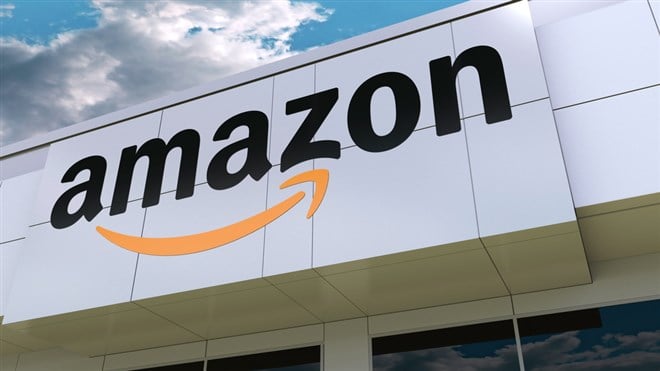Why Is Wall Street Loving Amazon So Much? Is this post-earnings dip giving investors a solid entry point? From where shares closed on Monday, price targets are pointing towards an upside of about 50%.
By Sam Quirke
Our biggest sale — Get unlimited access to Entrepreneur.com at an unbeatable price. Use code SAVE50 at checkout.*
Claim Offer*Offer only available to new subscribers
This story originally appeared on MarketBeat

Despite some coolness over the past three sessions, shares of e-commerce giant Amazon.com, Inc. (NASDAQ: AMZN) are still up 25% since their January low. This is more like the Amazon of old, whose gravity-defying stock made it one of the buys of the past decade.
But it's been a choppy year since shares were tagged at an all-time high in November 2021. With rising inflation leading to rising interest rates, dwindling consumer demand became a 2022 headwind that cut their stock in half. Still, Wall Street has a short memory and is nothing if not forward-looking. So with shares doing their best to break the multi-month downtrend, let's look at some current drivers and see what else lies in store for the stock.
Last week's earnings report would have been the primary catalyst that investors have been eyeing since the new year began, with some highs and lows already reported from their tech peers. In particular, revenue from the company's AWS cloud business unit was under the microscope, given how Microsoft Corp (NASDAQ: MSFT) had cautiously guided about their own cloud revenue.
Near Term Headwinds
The results were, perhaps unsurprisingly in light of its peers, a bit of a mixed bag. Non-GAAP earnings of $0.03 missed analyst expectations by a chunky $0.14 and swung perilously close to a loss, while revenue managed to top the consensus and show year-on-year growth of 8.6%. On the former point, it was noted that the weak earnings print included a pre-tax valuation loss of $2.3 billion from Amazon's common stock investment in Rivian Automotive Inc. (NASDAQ: RIVN) compared to pre-tax valuation gains in previous quarters.
The much-watched AWS number came below already reduced estimates, hitting $21.4 billion against the $21.76 billion analysts had expected. This disappointment, however, was made up for by ongoing growth in the company's advertising revenue and net sales from North America.
And while the stock did lose some of the wind in its sails in the aftermath of the release, dropping 8% on Friday and another 1% yesterday, there are still plenty of optimistic voices in the bull camp. Morgan Stanley's Brian Nowak acknowledged the ongoing headache from a slowing AWS revenue stream and pinpointed "macroeconomic headwinds" affecting AWS' target industries as the primary issue here.
But, like we've seen with some other big names recently, these headwinds are not expected to be around for the long term. In a note to clients, he wrote that "in our view, these near-term growth headwinds are more transitory and macro driven. We acknowledge that cleanly modeling growth during these volatile periods is challenging, but we don't see a change in the multi-year opportunity."
Amazon 50% Upside
He reiterated his Outperform rating on the stock and its "Top Pick" status. He even went so far as to raise his EBIT estimates based on a stronger-than-expected retail performance and upped his price target from $140 to $150. In that context, is this post-earnings dip giving investors a solid entry point? From where shares closed on Monday, that price target points towards an upside of about 50%.
And Nowak wasn't alone in his long-term optimism either. The teams over at Cowen, Benchmark UBS and Bank of America all upped their profit estimates for the year ahead, indicating that Amazon was overly conservative with their guidance.
Specifically on AWS, too, Bank of America said: "that the trajectory for cloud growth is bent, not broken." And finally, the team at Wells Fargo also shrugged off the earnings miss and reiterated Amazon as one of their "Signature Picks" for 2023.
There are still recession fears to contend with, and it will be a while before consumers are spending online like it's 2020 again, but all the signs suggest that Amazon has weathered the worst of the storm. If the inflation numbers continue to flatten, if not dip, that will be confirmation of the long-term opportunity so many of the bulls are talking about, both in Amazon and many of its tech counterparts.
Amazon.com is a part of the Entrepreneur Index, which tracks some of the largest publicly traded companies founded and run by entrepreneurs.









